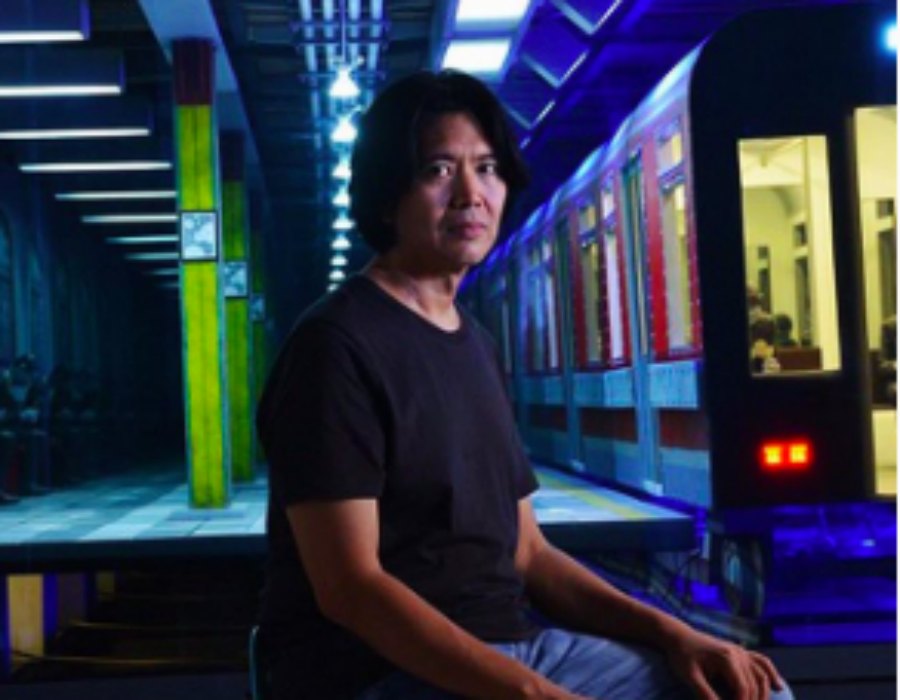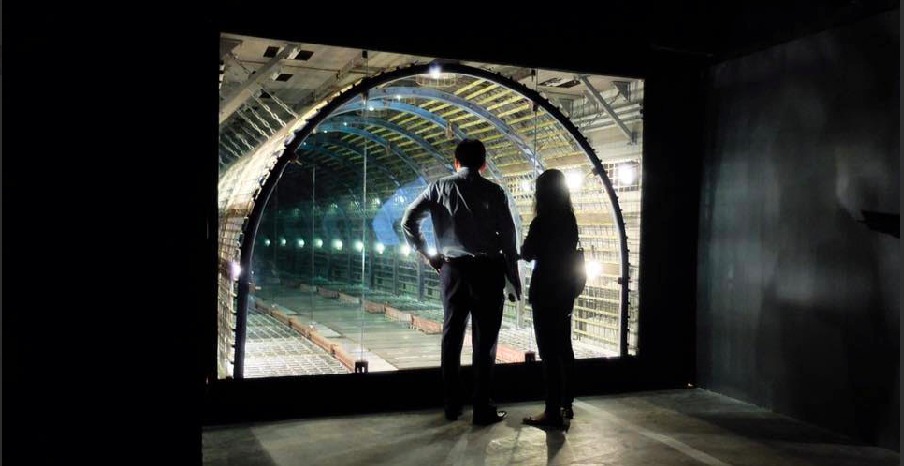The art world can seem like a foreign, impenetrable place. If you’re like me who doesn’t sell, create or collect art, then it’s easy to feel like an outsider, especially in an event like the Art Fair Philippines.
By mistake, I attempted to go to the fair a day earlier. I was surprised to be welcomed by a bunch of muscled security guards instead of friendly ushers. Of course, the day before it opened to the public was reserved for VIPs and collectors.
It did feel like important people were around. Nice cars were stopping in front of the entrance. There were a lot of bodyguards in crisp, white barongs. Not a usual scene in a typical Makati mall.
I later found out that Imee Marcos was there. And Tessa Prieto Valdes, too. Charlene and Aga Muhlach also dropped by. As did Julius Babao and Ces Drilon.
The bodyguards and tight security make sense now.
I won’t even pretend that I know anything about art, but this doesn’t mean that people like who aren’t in the secret circles can’t appreciate art fairs and exhibitions. Perhaps to a certain extent, I enjoy them more because there are no reputations, agendas or money involved. No pressure. No commitments.
I came back on Feb 18, the actual opening day. It was such a breeze to go to The Link riding the P2P bus the day before, so I didn’t mind another commute from way up north.
The muscled guards at the entrance were still there but there were friendlier faces who gave me my ticket.
It was a relief to see that not everyone inside was wearing an all-black ensemble. There was a healthy mix of people from all walks of life: teenagers with huge backpacks, expats, beautiful women in dresses and heels, millennials with their big cameras, IS students on a field trip. It was such a good crowd for an early Thursday morning, I was glad not to stick out like a sore thumb.
Art Fair Philippines is a convenient way to see artworks from 40 of Manila’s best galleries and hundreds of the most interesting artists from the region. Given today’s traffic, it would be physically impossible to visit all the actual galleries in one day. But because they’re all together at this fair, I was able to take a quick look at everything in just a couple of hours.
The fifth, sixth and seventh floors of the The Link carpark in Ayala have been transformed into fair grounds for the four-day event. Trusted and well-known gallery names are present: Silverlens, Pablo, Tin-Aw, Pinto and 36 more. There are also special exhibits, a cafe, and a wine bar (yay!).
I heard a lady say that she liked the “industrial” and “minimalist” look of the fair. I say it’s in a car park, so that look is the easiest look to achieve. Right?
On the fifth floor is where they hold art talks and lectures. I thought it was a good idea to start my trip by listening to someone who knows what art is about.
Unfortunately, the topic I chanced upon was art insurance. Everyone in the talk was in nice clothes, and nodding quietly. Some of them took notes. Five minutes into the lecture, I saw that I wasn’t part of the target audience. What do I need to know about art asset protection? I have nothing to protect.
So I quietly slipped away to find art that would, as they say, “speak to me.”
It was a surprise that there were no shockingly obscene sculptures, no naked models walking around, no neon signs with bold statements. The exhibit was very reserved and conservative. Nothing was screaming “Look at me! Look at me!”. Perhaps this is a sign of confidence in the emerging art scene in the Philippines.
One of first things that caught my eye was “Structural Downpour,” a participatory exhibit by Mark Salvatus. This one I understood immediately. My friends and I did a bit of this when we were in first grade. Mark provided pencils, paper and a table. The concept is to trace whatever coins you have on you, etchings and all, and stick it to the wall. The resulting work is his statement about how an art fair is similar to trade because it is a matter of economy for artists and collectors. Clever? You decide.
I saw students who were giggling as they traced their coins. Perhaps like me they were wondering if they were actually doing art.
Then there’s that piece by the Aquilizans, a couple based in Australia who always share a byline. It’s their first time at Art Fair Philippines. They made a display on something that most Pinoys understand: Mabini art. During its glory days, Mabini was the Greenhills of Filipino paintings. The Aquilizans made a statement on the long history of art, pricing and how artists are turned into factories to create pieces of value. The piece looked like a sari-sari store of artwork, and it has all the Mabini paintings that we see in a typical Pinoy home: The Last Supper, birds, flowers, fruits in a basket.

Another easy-to-understand and appreciate item was “His Only Son” by Daniel Dela Cruz for the Art Cube gallery. Viewers walk in the dark as the whole booth is covered in black cloth. Meticulously made brass sculptures are displayed to mimic a church. His interpretation of the seven capital sins was particularly interesting. His work was a commentary on Filipino faith devotion. How very timely, considering that everyone is talking about a certain boxer-congressman who uses Bible verses to defend his beliefs.

On the seventh floor, there’s the special exhibit by Pam Yan Santos. The installation felt like a park. Her display was an invitation to find solace in the midst of the hustle and bustle of the busy art trade. Personally, I didn’t feel relaxed after I stepped on her “grass,” but I kind of get its appeal.

There was also Mark Justiniani’s very Instagram-worthy work. I am sure he’s received praises more valuable than that, but it simply means regular folks can see the beauty of his chamber-like installation piece. With a brilliant play of light and shadow, his Infinity series conjured images and illusion with the use of mirrors and three-dimensional media.
I overheard one man say that an Arturo Luz piece is a good investment since the artist is ageing, and prices of his works will go up when he passes away. I don’t know if there’s any truth to this, but there were many people looking at his work and I could almost see peso signs popping out of their their eyeballs.
There were also pieces from other very well-known Filipino artists, but I felt like they were there to be sold. I’m perfectly fine with that. It means that the Philippine art business is doing well.
I ended my short trip with a quick lunch of pork belly sandwich and a nice cup of coffee at the cafe. It was a pleasant surprise that the food was really good. A bit pricey, but still worth it.
I people-watched as I ate. I saw a happy crowd, and from the looks of it, very few actually look like they bought anything, though to be fair I don’t think you’re allowed to take home your purchase before the art fair wraps up.
What I learned from attending Art Fair Philippines was this: The local art scene may be controlled by the few collectors who have the money to invest, but us regular folks help keep Pinoy art alive and thriving.



